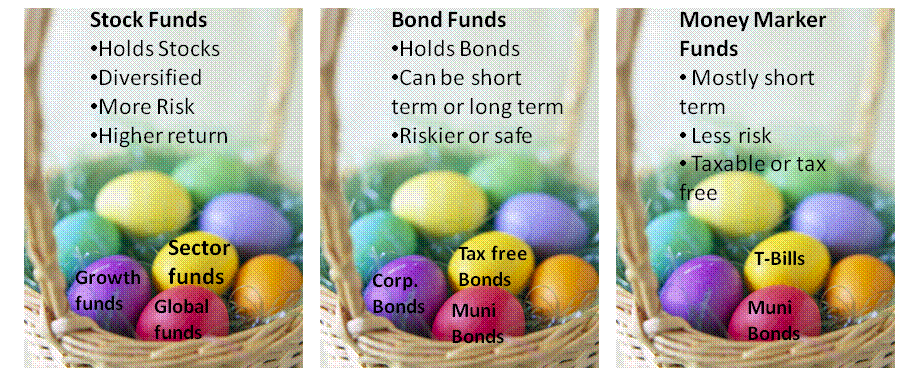Mutual Funds Stocks Bonds Money the Funds Party On
Post on: 9 Июнь, 2015 No Comment

And despite a third quarter in which the average equity fund lost 15 percent, mutual fund shareholders approached the end of the year with a near-record portion of their assets invested in stocks.
According to the Investment Company Institute, a trade group, mutual funds that invest primarily in American stocks took in $155.58 billion in net new cash through November. Therefore, total new flows for 1998 are likely to be less than in each of the two previous years, but more than in any year before 1996.
The reasons for the diminished cash flows can be traced to the August turmoil, which led equity fund investors to make $11 billion of net withdrawals from stock funds — the first such withdrawals since September 1990. That was when the stock market suffered its last decline of more than 20 percent, after Iraq’s invasion of Kuwait.
During the subsequent eight years, the assets in stock funds ballooned tenfold, to $2.809 trillion. More than two-fifths of that growth came from new investments, while the remaining three-fifths came from gains in the value of stocks.
Investors did not panic during the August downturn, nor in the following months. Instead, they returned to making new investments in equity funds in each of the following three months. Funds investing primarily in American stocks fared the best, with nearly four times as much flowing into those funds from September through November as went out in August.
Mutual fund companies are likely to draw comfort, as well, from the fact that $9 billion of the $11 billion that flowed out of stock funds in August was placed in bond or money market funds operated by the same fund companies, rather than being withdrawn altogether from the companies’ coffers, according to the Investment Company Institute. That means the fund companies continue to earn at least some management fees from the money, which they would not do if investors had cashed out completely.
The overwhelming appetite for equities among fund investors since the beginning of the decade has resulted in a big shift in asset allocations within the fund industry. At the end of 1990, a mere 25 percent of the fund industry’s total assets were invested in stocks, with about 28 percent in bonds and 47 percent in money market accounts.
By the end of November, the stock and money market allocations had changed places. Now, approximately 56 percent of total mutual fund assets of $5.369 trillion are invested in stocks, with 26 percent in money markets and 18 percent in bonds. (The allocations split the assets of hybrid funds among stock, bond and money market funds.)
The latest stock allocation is not far from the high of 58 percent of total fund assets reached in April of last year. That month marked the peak of the Russell 2,000 index, a benchmark of smaller-company stocks, and many equity mutual funds, which generally invest in smaller stocks than those in the Standard & Poor’s 500-stock index and other large-cap market yardsticks.
All of which demonstrates that even severe market turmoil does little to change the investment patterns of mutual fund investors. It remains to be seen, however, whether that will hold true in a prolonged market downturn — one in which stock prices fall over several quarters rather than over just a few months.
What is likely is that investors will funnel large amounts of new cash into stock, bond and money market funds this month. In three of the last five years, January has been the biggest month for cash flows into equity funds, as investors turned their year-end bonuses, and their payments in profit-sharing and other retirement programs, into mutual-fund shares.
Fund flows from 401(k) and other types of retirement programs are likely to be one of the fund industry’s sources of strength this year, said A. Michael Lipper, chairman of Lipper Inc. a division of Reuters Group P.L.C. that tracks fund performance.
Lipper, however, said he expected a definite slowdown in money into equity funds for the remainder of 1999. Part of that, he said, was a residual effect from last year when investors were shaken up by the market swings. A lot of fund performance numbers are going to be quite good on an absolute basis, but people are uneasy about the direction of the market.
Even if January is not the single biggest month, January through April is the industry’s busiest season as investors make deposits before the April 15 tax deadline. With baby boomers edging toward retirement age, their children approaching college age, and stocks providing the best outlook for long-term investment returns, those trends are likely to continue. It is the rest of the year, however, that the fund industry may have to watch out for.














